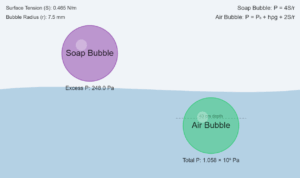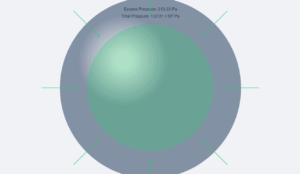Fluid Pressure Concepts Simulation
Exploring blood pressure, atmospheric pressure, and hydrostatic pressure
Human Body Parameters
Pressure Parameters
Atmospheric Parameters
Hydrostatic Parameters
Surface Orientation
Blood Pressure Measurements
Why blood pressure is greater at the feet than at the brain
The pressure in a fluid column is given by P = ρgh, where ρ is density, g is gravity, and h is height of the column.
In the human circulatory system, the height of the blood column is least at the brain and greatest at the feet. Therefore, the hydrostatic pressure contribution is highest at the feet, making the blood pressure greater there than at the brain.
Atmospheric Pressure Data
Why atmospheric pressure decreases rapidly with altitude
Atmospheric pressure at about 6 km decreases to nearly half its sea level value because air density is greatest near the surface where the entire atmospheric mass compresses it.
The pressure decreases non-linearly with altitude because air density itself decreases with height. The relationship is exponential rather than linear, following the barometric formula: P = P₀e^(-h/H), where H is the scale height.
Hydrostatic Pressure Analysis
Why hydrostatic pressure is a scalar quantity
Although pressure is defined as force per unit area (a vector concept), hydrostatic pressure is isotropic - it acts equally in all directions at a point in the fluid.
When force is applied to a liquid, the pressure is transmitted undiminished in all directions (Pascal's Principle). Since there's no preferred direction, hydrostatic pressure is properly described as a scalar quantity.



